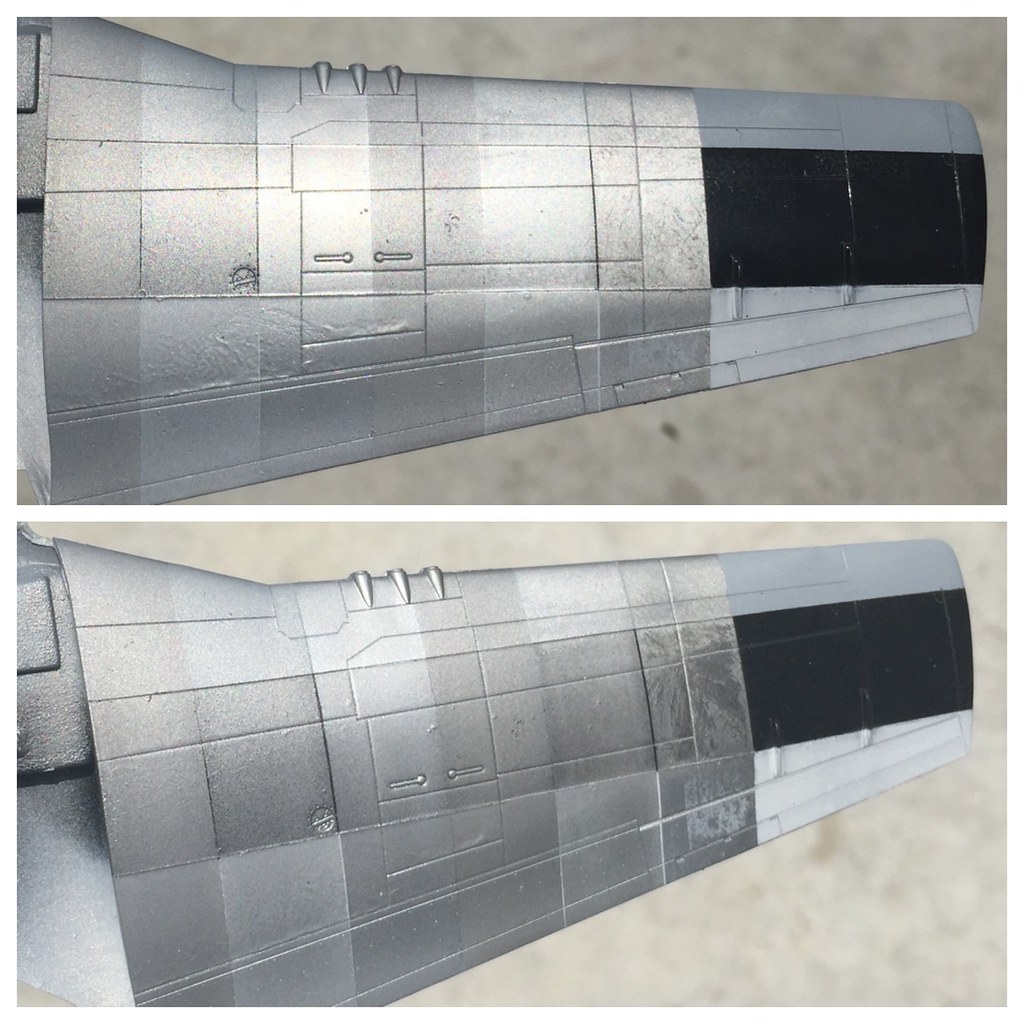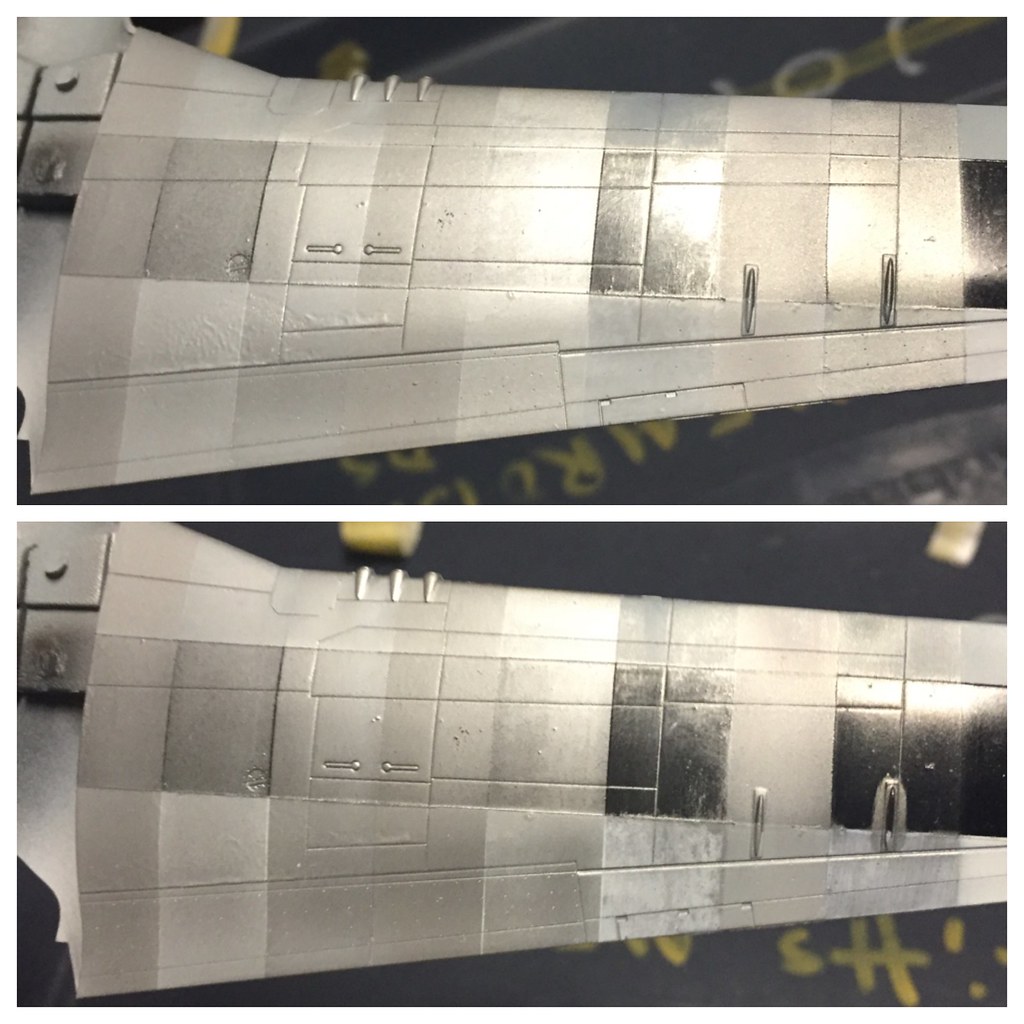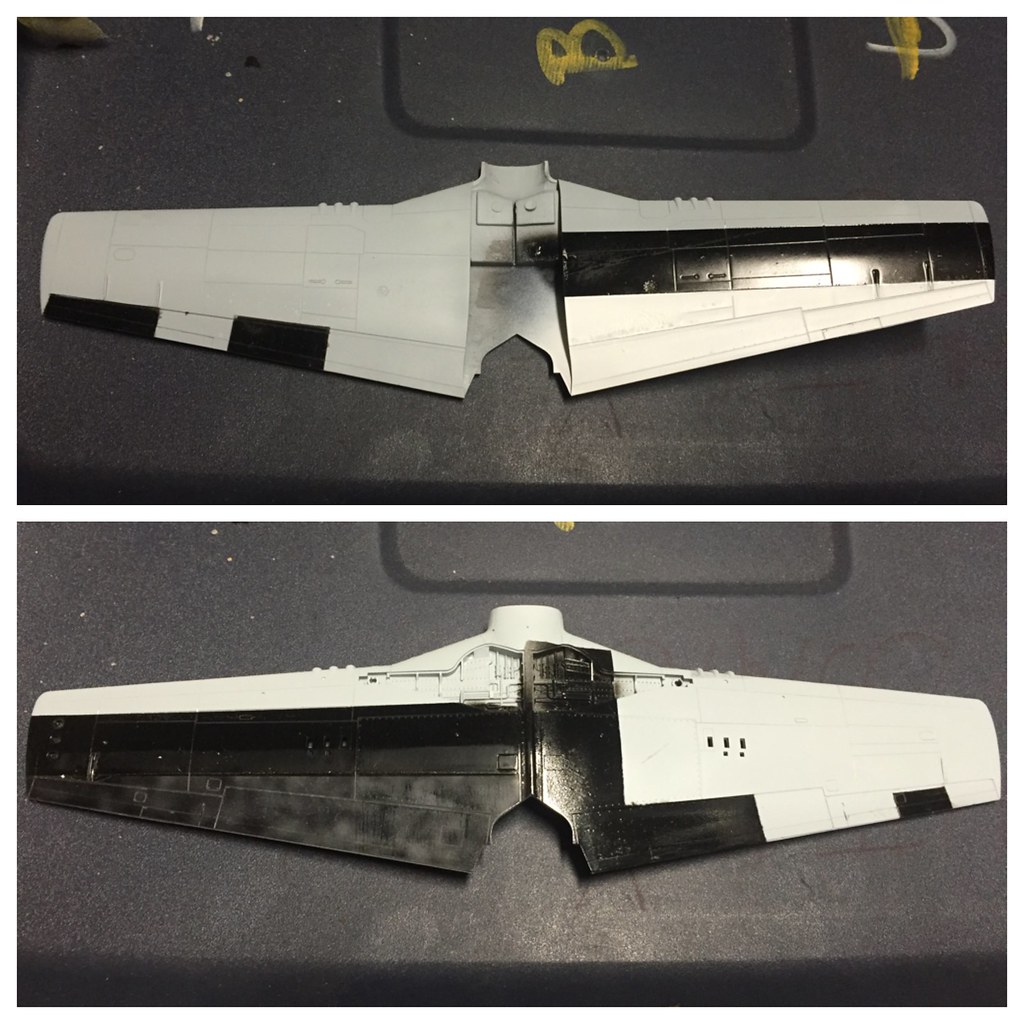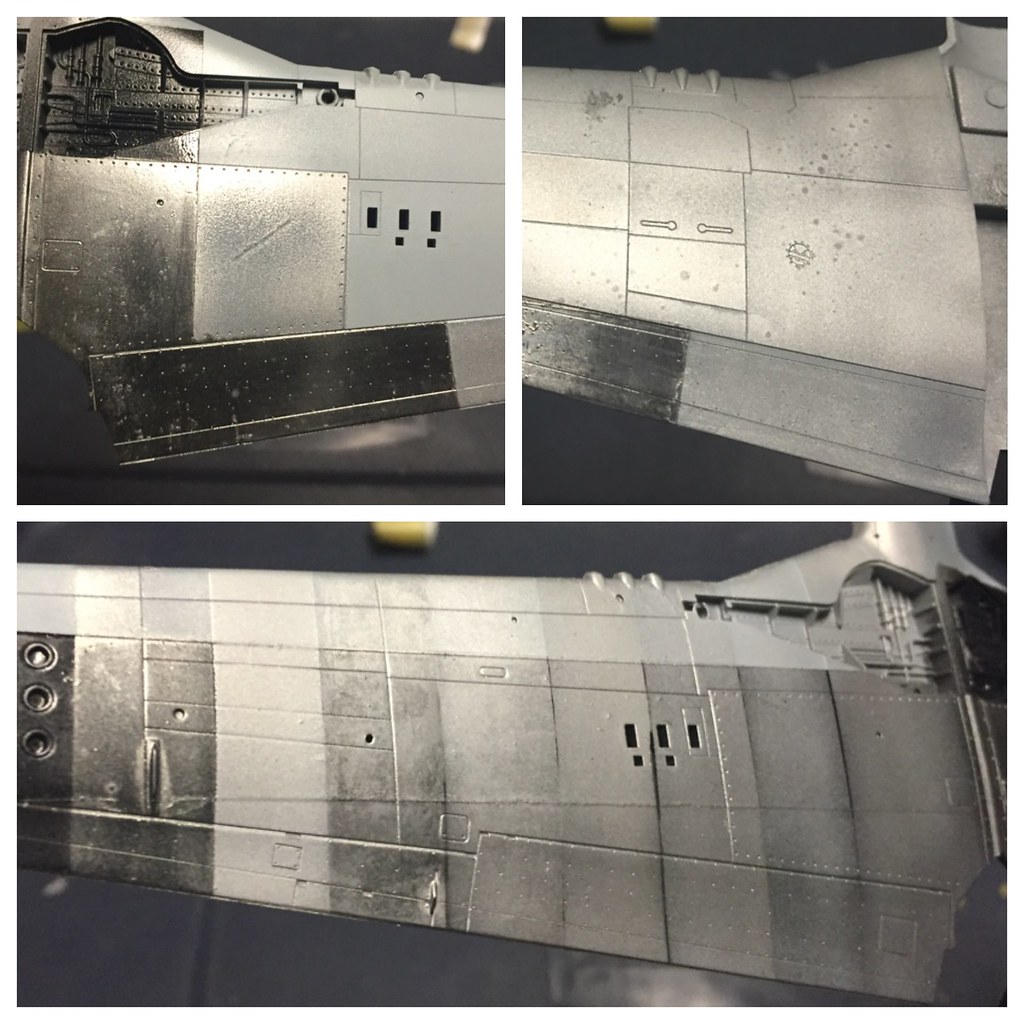So I've been trying to put this together for a while but being a new dad makes it a bit more cumbersome. It's a little less professionally pulled off than I intended but it does provide a benchmark from which to work and plan your painting. I did encounter a small hiccup with regards to the highshine Alclads Airframe Aluminum and Stainless Steel. I was painting these rather quickly (as time as been a luxury) and my quick clean method seems to have begun to fail towards the fourth or fifth color. My Airframe Aluminum swab came out cloudy...only to find it was just a residue that rested on top during painting. I first thought it wasn't dry, but come to find out it rubbed right off to reveal the actual paint...curious huh. This was the actual first time I painted with the Airframe Aluminum as well even though I'm aware of how it should appear. Thus...the test. =]
I also found the Polished Aluminum to be a bit cloudier than I've seen in the past...just a quick note. Over the Gloss Black it will shine a pop a bit more than seen here. So here we go:
I tried to combine these to consolidate the photos to keep from being picture heavy. I hope they're not too small now. I may repost if it doesn't read well.
 Untitled by Britt Vallot, on Flickr
Untitled by Britt Vallot, on Flickr
So from left to right you're looking at Dark Aluminum, Aluminum, White Aluminum, Duraluminum, Polished Aluminum, and Airframe Aluminum (pre-residue rubbed off). This is outside in natural light, fairly sunny, and they appear over the Alclad Grey primer, Gloss Black primer, and Tamiya Fine White primer. I kept the coats somewhat in the middle...about three to four solid passes with my airbrush.
In all noticed that the Semi-Matte resisted shine the most, then the Duraluminum, and Dark Aluminum next. The Airframe shines brightest and Polished Aluminum next brightest. The tones are obvious to see next to one another. There will be more of an apparent difference between the Grey primer and Gloss Black primer when viewed from different angles especially.
 Untitled by Britt Vallot, on Flickr
Untitled by Britt Vallot, on Flickr
The next one includes the Semi Matte, and Stainless Steel. The Airframe shines bright here. The lighting is from a flourscent bulb in my gargage. The white primer seems to give a more weathered and beaten look to the metal if that is what's desired. However, I think the grey primer is better suited at giving the builder more control over the process and ultimately more depth to what can be achieved. Just my thoughts on that.
 Untitled by Britt Vallot, on Flickr
Untitled by Britt Vallot, on Flickr
 Untitled by Britt Vallot, on Flickr
Untitled by Britt Vallot, on Flickr
In this last two pics, I apologize again at how rushed these were, you're looking at the layout of the primers, and in the second pic the top two frames show some test pieces to see how some buffing would affect the outcome. Originally, on the undersurface, I started as before with the Grey on top, Gloss Black on the bottom, but on the bottom half I sanded with a fine sanding stick to buff the surface, and below that I used a trick I saw from Doog's playbook by marbling in some Tamiya Dark Grey. Ultimately didn't see the success I was hoping for. Limiting factors may include the narrow surfaces with which I was working as well as needing to be a little more diligent with cleaning my airbrush. I think these would help the high shine alclads better than the rest of the line up though based on how the angles of viewing allow the paints to perform. In the second pic, the left pic shows the Duraluminum on the top portion of the wing with Dark Aluminum on the ammo doors. This was all lightly sanded with the extra fine sanding stick. The dots you see are from overspray that occurred from me rushing the priming of the wing, but they help to show you how this light sanding appears from different angles. The right top frame shows the Airframe Aluminum was painted over both the Gloss Black and Grey primers and then lightly buffed with an extra fine sanding stick in the same manner. Since Larry already provided an example of how this looked I thought I would explore buffing the surface after the fact since I wasn't getting quite what I had intended to see with the ease I wanted. I really liked how both sides came out. Very reassuring. I'll likely repeat this on the underside for this panel with my Mustang.
That's all I have time for at the moment. I hope this generates some dialogue. I would love to hear what others think and outcomes you've had (successes v failures).
=]